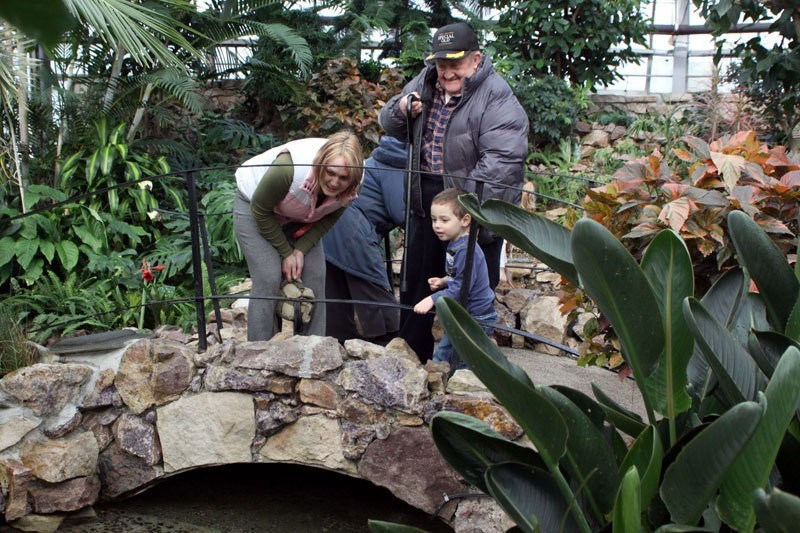THUNDER BAY – The future of Thunder Bay’s botanical conservatory may not be as bleak as some feared, after the facility appeared on a list of cuts considered by city council last week. The city estimated closing the conservatory would save around $160,000 per year, as councillors looked for savings in the 2020 budget.
Council put off a decision on the aging facility’s future until seeing a report from city administration, expected in March. That report will present the results of public consultations and assess the condition of the buildings, efficiency of current operations, and options for its future.
City officials say the conservatory and adjacent greenhouses are badly in need of work if they’re to stay open.
“They’re both end-of-life, essentially,” says parks manager Cory Halvorsen.
That diagnosis could present an opportunity to renew the attraction, opened in 1967 as a Canadian centennial project. Halvorsen says the report to council will look at ways to make the facility more cost-efficient and draw more visitors.
That includes the possibility of refreshment service and more educational programming – “something to draw people there over and above the plants at the facility,” Halvorsen says – and renovations to increase energy efficiency.
The city is also looking to leverage the facility to save money in other areas. Halvorsen is examining the possibility of growing native plants for low-impact developments in the greenhouses. He says the plants, which help prevent flooding, can cost up to $70,000 on a single project when purchased through a contractor.
The greenhouses currently provide plants for city parks. The report will examine whether doing that work in-house is generating savings for the city, compared to purchasing them privately.
Kevin Sidlar, a volunteer with the Friends of the Thunder Bay Conservatory, says it’s long past time the city invested in the facility. Replacing the conservatory roof would likely pay for itself in around six years through energy savings, he says.
He also takes issue with the city’s failure to promote the attraction. He says its annual advertising budget is limited to an ad in The Key. That leaves the Friends group doing much of the work to promote it and organize events.
Sidlar says despite its challenges, the conservatory remains a popular destination, with events often drawing hundreds. The city estimates roughly 100 visitors per day, not counting special events.
But Sidlar says the city needs to move on some long-delayed work, such as re-opening the conservatory’s two side-rooms and widening paths to comply with accessibility standards, for the facility to meet its potential. Sidlar argues some investments now will save the city money in the long run, and help revitalize an important public asset.
That’s a message that resonates with John Coupar. A long-time champion of the Bloedel Conservatory in Vancouver, he saw that facility nearly close in 2009 when it faced a large roof repair bill.
“The management at that time thought this was something that was past its prime, didn’t want to invest in it,” he says. “They weren’t spending any money on it. And so it was kind of a declining asset.”
But after a public campaign Coupar helped lead, the facility got a new roof and a plan to renew public engagement. That included things like hosting special events, training volunteers to give educational tours, and offering scavenger hunt booklets for kids. In 2018, Bloedel brought in a rare corpse flower plant, with people lining up for hours to catch a glimpse.
Coupar acknowledges Vancouver is not Thunder Bay, but he says the appeal of conservatories is universal.
“They’re actually much more relevant now than when they were first conceived,” he says. “They were conceived as display gardens, but as the tropical rainforest is threatened, as the temperate rainforest is threatened, we really started talking about the educational potential of the facility. That really resonated with a lot of people.”
